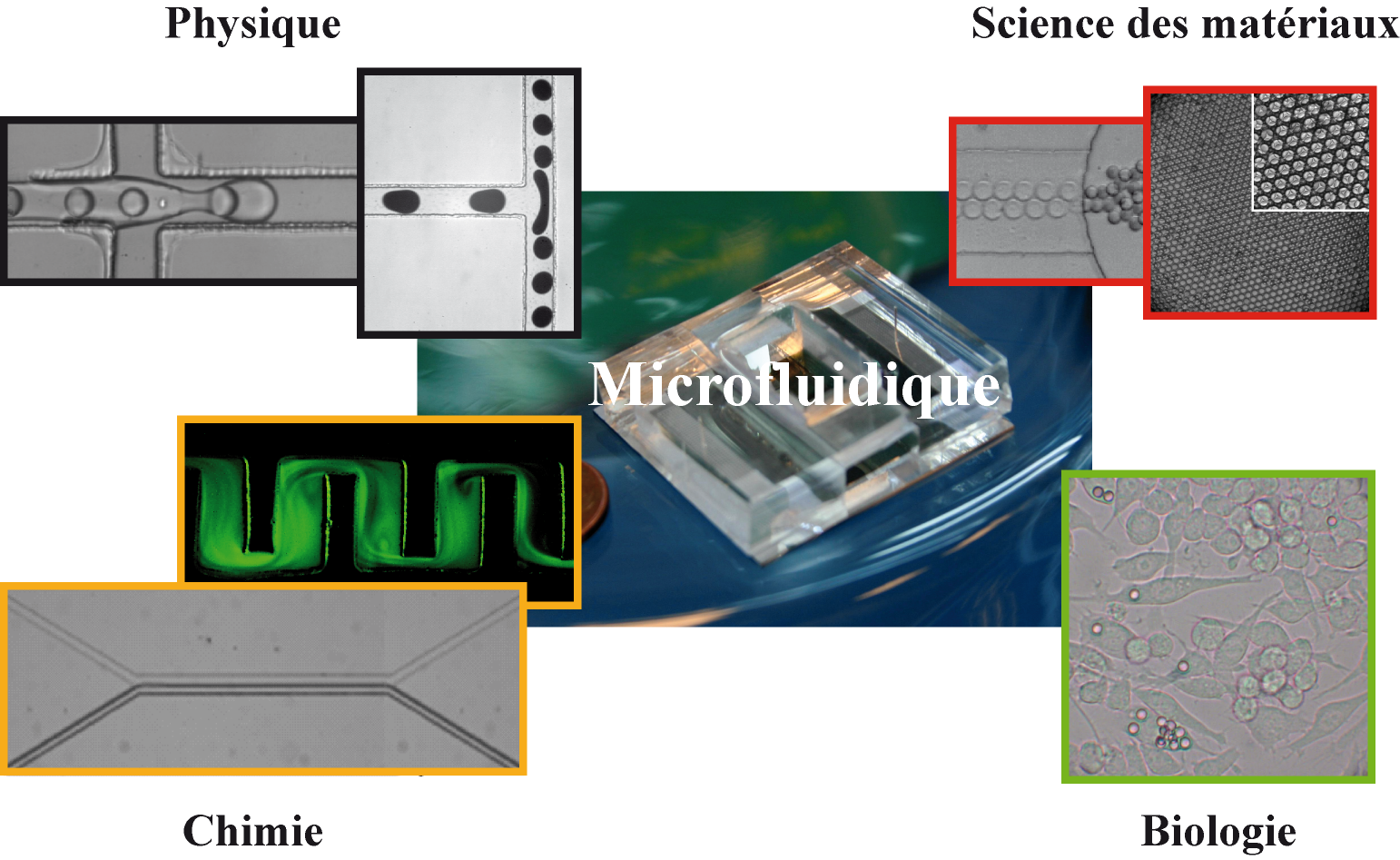Microfluidique laboratory
Introduction
Microfluidics is the science and technology of systems that manipulate and transform small amounts of fluids (nanoliter to attolitre), using channels from a few tens to several hundred micrometers in size. Over the past decade, microfluidics has become a powerful tool used in basic and applied research. Indeed, microfluidics can play a key role in different fields such as chemical synthesis, biological analysis, optics and information technologies.
Within the NIMBE / LIONS laboratory, we have been using microfluidics in our experimental research for several years. The flexibility of this tool makes it possible to address:
i- fundamental chemistry problems such as the nucleation / growth of nanoparticles or the extraction of salts in the liquid-liquid phase
ii- interface physics problems with, among other things, the development of a model Pickering emulsion system and also
iii- more applied research on the development of microfluidic chips for medical diagnostics.
All these themes are involved in internal CEA and national research programs. One of the main objectives is to adapt these tools for in-situ measurements on large instruments. A partnership is currently underway with the SOLEIL synchrotron to develop a common synergy around microfluidics. Our researchers thus provide their expertise in microfluidics in order to develop new chip manufacturing processes compatible with ionizing radiation.
